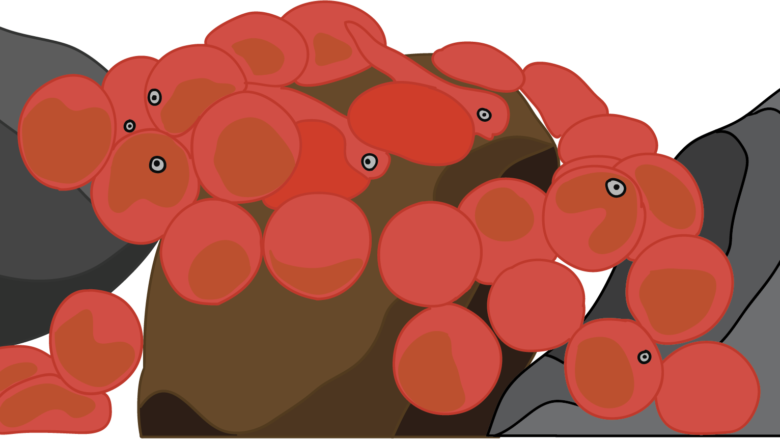My elementary students are learning that mathematicians and scientists use standard units of measurement (metric or U.S. standard system) to measure distance, volume, weight, and temperature. Using standard units of measurement provides opportunities for scientists and mathematicians to replicate science experiments, share data, and reproduce objects from a set of directions. My students would also argue that numerical values are also standardized. After all, 5 is 5.
We can count 5 pennies, 5 lollipops, and 5 craft sticks but the value of each set of objects varies. Students also perceived that 5 is not a significant amount. After all, you can’t buy much with 5¢. However, the perception of the value of 5 has changed for my students this year. My class has been participating in raising salmon in the classroom for the past 10 years. On December 6th, 250 co-ho salmon eggs arrived in our classroom. Students were very excited and anxiously waiting for them to hatch. When I checked the tank Sunday, December 9th, I found the thermostat for the chiller wa s not working. I contacted a local refrigeration company but was unable to schedule a service call until the following morning. I hesitated to use purchased ice to cool the tank in case of contamination so I made sure the heat was off in the classroom and began freezing safe water. The next morning, I put the frozen blocks of safe ice in the tank and waited for the repairman to arrive. During this time, I noticed that one egg had hatched and 10 eggs had died.
s not working. I contacted a local refrigeration company but was unable to schedule a service call until the following morning. I hesitated to use purchased ice to cool the tank in case of contamination so I made sure the heat was off in the classroom and began freezing safe water. The next morning, I put the frozen blocks of safe ice in the tank and waited for the repairman to arrive. During this time, I noticed that one egg had hatched and 10 eggs had died.
The repairman arrived and quickly repaired the thermostat. A temperature check indicated that the water temperature was at 55°F. My contact at the hatchery assured me that this temperature was only 5° over acceptable range and that everything should be fine. After all, some morbidity is expected. So, the students and I began observing closely. We noticed that 3 more eggs hatched on December 13th. From December 17th – 19th a few more hatched each day. Between December 20th and 21st, the eggs were hatching too quickly to keep count. As we headed into winter break there were only a few eggs remaining. The last egg hatched on December 28th. If you’re wondering why I’m rambling about the hatching date, it is because it was very different from previous years. In the past, the eggs have hatched over 2-3 days. We have never had so many eggs die. Also, we observed 4 fish attempting to hatch but died in mid-hatching (the first one died Dec 10th and the last one died Dec 28th). Two of the fish were found frozen to the metal pipe of the chiller even though the chiller was operating typically and keeping the water at 48°. This has never happened in the past. Students hypothesized that the fish may be weaker due to the temperature malfunction. We also noticed that there were 4 groups of redds where in the past there was usually one or two.
Students first reaction to the salmon hatch was emotional: they were sad, concerned, and had a feeling of helplessness. After a period of grief, the class has taken on the persona of scientists and are committed to continue their observations and comparing them with past experiences. It makes me wish I had kept better data in the past but am using this as a learning opportunity as well. Students have connected how important it is to document observations even when everything is going well in order to establish patterns. They have also learned that the value of 5 can have a significant impact when it’s 5°.
Submitted by Becky Hendrickson, Special Ed/FOSS teacher at Shining Mountain Elementary
